Last updated on March 14, 2024
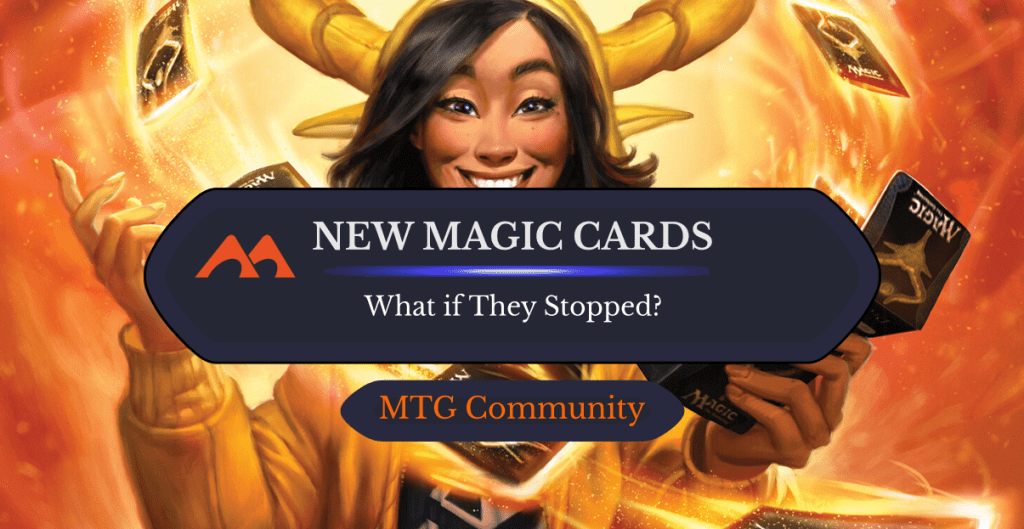
Vorthos, Steward of Myth | Illustration by Caroline Gariba
New Magic sets seem like an inevitable part of the game. After all, that’s how Wizards keeps the game going, right? Well, what if it wasn’t the only option? What if, instead of continuing to print new cards several times a year, Wizards stopped printing new cards altogether?
Well, your initial reaction might be to dismiss this as a possibility, but after giving it some thought, you might start to realize some interesting directions Magic could go if there were no new cards being printed.
This situation would affect nearly every aspect of the game, including formats, the availability of cards, and what products look like. While it might seem like a monumental and somewhat unlikely way to shake up the game, it’s worth considering if it might actually improve the play experience and accessibility to players.
The “What If” Situation
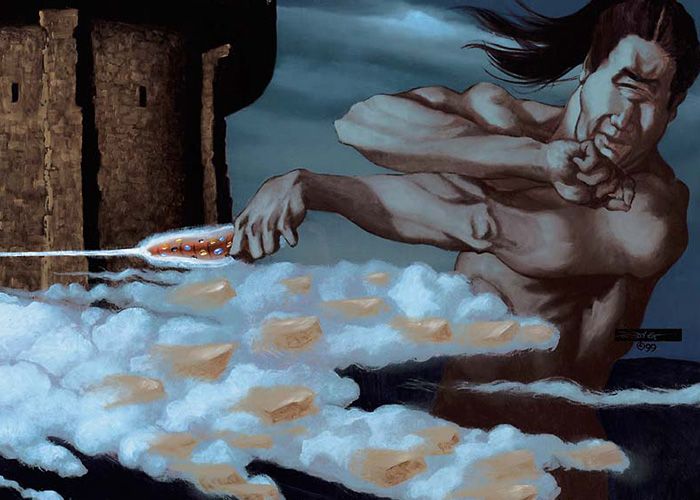
What the…?! | Illustration by Randy Gallegos
There are two main goals with this hypothetical situation. The first is to go through a fun thought experiment. While it isn’t likely that Wizards will adopt the model proposed here, it can still be interesting just to ask “what if?” The second reason is to examine some moves Wizards could realistically take to improve Magic. While this entire scenario may be too drastic, there are elements of it that could help improve the game and that Wizards could possibly do. In fact, one of the elements I discuss here seems like it might be part of Wizards’ plan going forward, given the announcement of two more remastered sets, Ravnica Remastered and Innistrad Remastered.
To be clear, I’m not proposing that Wizards of the Coast stop printing or supporting Magic. What I am suggesting is that the products Wizards continues to release only include reprints of old cards. There are several different ways that I think this could work, which I’ll cover shortly.
Realistically, I don’t think Wizards would want to slow down their current release schedule, so in the situation I’m proposing, they would still be printing about the same number of sets each year. In fact, whether or not WotC is printing too many cards is an entirely seperate analysis that my fellow Draftsim Writer Herko Kerghans broke down in his own editorial, “Is Wizards Printing Too Many Cards?”
They would also be leaving the Reserved List intact. While I don’t want to get too into what I think of the list or how it affects the game, I think the idea of getting rid of the list would be its own hypothetical situation requiring a level of detail and attention that would detract from what I’m discussing here. For our purposes, we’ll just assume the Reserved List wouldn’t change.
What Would Be the Point?
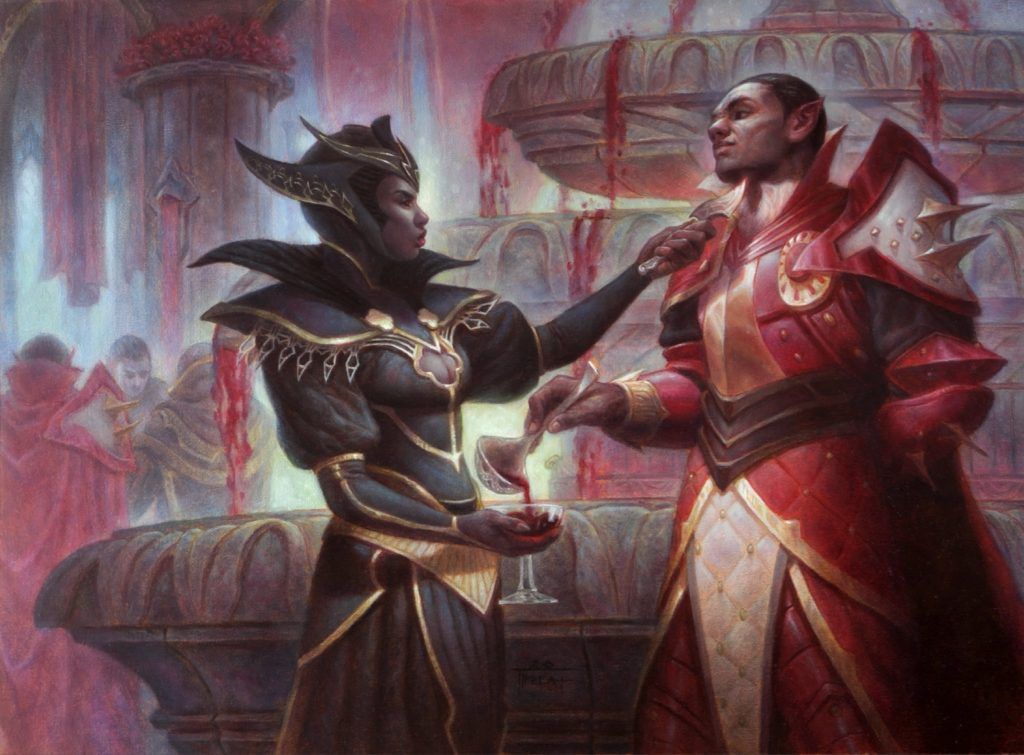
Pointed Discussion | Illustration by Jarel Threat
In some ways, Wizards is hurting Magic by printing new cards. While this doesn’t mean all new cards are overall worse for the game, it’s worth examining the harmful effects this could have. One of the most obvious ways new cards can hurt the game is through power creep. However, It’s true that any long-running game will inevitably run into power creep, and this doesn’t mean that Magic will die off because of it.
That being said, it does have a negative effect on the game’s older cards and can make it more difficult for some players to keep up.With the exception of early cards like the original dual lands, or the Power 9, newer cards tend to be, on average, more powerful than older cards. For example, Savannah Lions is an old rare that was considered very powerful at the time it was printed simply because it was a 2/1 for a single mana. Compare that to a one mana 2/1 like Dauntless Bodyguard which is printed at a lower rarity and has more abilities for the exact same mana cost. It’s clear that Magic is trending towards more powerful cards at a lower mana cost.
Power creep takes once-powerful cards and makes them irrelevant. At one point, Jace, the Mind Sculptor and Liliana of the Veil were considered incredibly powerful cards. However, with newer 3-mana walkers like Oko, Thief of Crowns, and cheap planeswalker removal like The Elderspell, these old powerhouses are far less intimidating.
By stopping the production of new cards, power creep would no longer be a concern. You could be relatively certain that the cards you have would continue to be as relatively powerful as they are now. This would allow you to continue playing decks that you enjoy for longer without worrying that they'll stop being competitive. That brings us to another way new cards can hurt the game: cost.
With Magic’s current model, it is very easy for players to get priced out of staying competitive. When a new set like Modern Horizons 3 comes out and reshapes the meta for a format, players who aren’t willing to spend several hundred dollars to build a new deck might find themselves unable to stand up to newer and more powerful cards. While winning isn’t everything, the game isn’t very fun when it feels like you have no chance to.
It’s even more frustrating if you take some time to save up for a new deck, just to have it become irrelevant and devalue soon after due to a new release. Players who bought Oko, Thief of Crowns for about $70 at its height probably know what I’m talking about. When the card was banned about a month later, prices quickly fell to $30. While they did go up briefly after that, Oko’s price eventually settled around $12 only six months after release. Anyone who put down a lot of cash to buy a playset of Okos would have been out over $150 in a matter of weeks and left with cards they weren’t allowed to play. Players without a huge budget to keep buying cards would have been unable to stay up to date in competitive play simply because they spent money on a powerful new card.
If Wizards printed only reprint sets, not only would there be less danger of a deck you saved up becoming irrelevant, but more frequent reprints would keep prices down in general. This means that even if you wanted to make a new deck, it would be less of a financial strain. While one could argue that this might affect the health of the game’s economy, it might not if lower prices means more customers. Lower deck costs would make it easier for more players to afford the cards they want, and this increased number of people buying into the game could potentially offset the lost revenue from whales.
So, Wizards printing only existing cards would aim to correct these issues with the current game model. Players would no longer have to worry about power creep and the potential cost it passes along to players who have to keep up with new cards.
However, one could argue that power creep also helps keep prices down, by making older cards worth less than the new powerful ones, this doesn’t really address the issue of players getting priced out of the game. Yes, older cards become cheaper, but that’s only because they’re no longer a viable option for competitive play. Power creep can be a nice way for casual players to get their hands on older cards they might have wanted for a while, but anyone wanting to compete at a high level would still need to pay for the newer, more expensive cards.
What Would Wizards Print?

Reap What Is Sown | Illustration by Cynthia Sheppard
So, if Wizards isn’t printing any new cards, what exactly could they print instead? Well, there are a variety of potential products Wizards could print, some of which already exist. You may also find some of these alternatives just as, if not more exciting than the current offerings.
One option for new products could be curated sets like Dominaria Remastered. There are plenty of planes that we’ve visited multiple times that could combine multiple sets into one designed for a fun Limited environment. Ravnica, Innistrad, and Zendikar all have plenty of cards based on them which could be put together to make a similar set of cards like Dominaria Remastered. This would allow players to still have new Limited experiences without necessarily needing new cards.
Another obvious option are Masters sets like Commander Masters or Double Masters. Like current Masters sets, these could be premium products that include highly anticipated reprints of powerful cards. These sets could also stand out by creating new special art treatments for existing cards, or including serialized cards. This would help retain some of the collectible aspects of the cards in a premium-priced set.
Now, if Wizards keeps its current pricing model, curated Draft sets would be slightly more expensive than a Standard set, and Masters sets would be premium priced, so we would still need something to be printed at the Standard price. One solution could be new print runs of old Standard sets. Plenty of players would likely love to experience playing with an older set again, or for the first time if they hadn’t been playing at the time. I know I’d personally love to experience Drafting Lorwyn for less than $50 a pack, and I’m sure I’m not the only one who would rather revisit an old set than play a new one.
In order for Wizards not to lose out on any money, here’s how I imagine the release schedule would go. Instead of the four brand new Standard sets printed each year, Wizards would reprint four of their old Standard sets. They could still supplement these sets with premium Masters sets as well as curated draft sets like Dominaria Remastered.
To replace the typical Commader precons that come out with each Standard set now, Wizards could instead release themed Commander decks for whatever plane they were reprinting sets from. For example, if Innistrad was getting a reprint, Wizards could release Avacyn, Angel of Hope and Edgar Markov Commander decks alongside it. These would be a good way to get reprints of popular commanders and cards in the 99 that won’t get reprinted in Standard sets because they were commander exclusives.
The one product that Wizards would have to change somewhat significantly would be their Universes Beyond sets. It is possible that Wizards could continue printing Universes Beyond products with all reskinned reprints similar to how they did with the Fortnite and Blood Bowl Secret Lairs. This would satisfy players who don’t like mechanically unique cards that don’t exist within Magic’s IP, though I do think the Universes Beyond sets would take a financial hit if they weren’t including new cards.
It would really be up to how well the player base took to this new model to see if an all-reprints style of product releases could work, but there are definitely ways Wizards could go about it while still releasing the same number of products into the market.
Under this model, Wizards would run the risk of players no longer buying as much product. With older cards becoming more available, and no new ones being printed, certain players might decide they’re done buying cards and simply drop off. However, I think that losing customers is already an issue Wizards faces by continuing to price players out.
New cards that force massive changes in a meta might convince a player it’s time for them to stop trying to keep up with new products and just stick to non-rotating formats like Premodern which never get new cards added to the pool.
Customers who enjoy playing Limited will continue to buy sealed product, and there are still plenty of players who would rather crack packs than buy singles. Wizards could also continue to create unique card styles and serialized cards to help drive sales of these products beyond simply wanting to get a specific card for a deck.
This might not keep sales at the same level that new products do, but there are definitely strategies Wizards can employ to try and keep incentivizing players to buy reprinted sets.
How Would Set Rotation Work?

Crop Rotation | Illustration by Daniel Ljunggren
To keep the game from stagnating, and to keep driving sales of recent reprints, Wizards would likely want to keep some form of set rotation. One way they could do this would be to just keep Standard rotation the way it is now, but instead of new cards, they would use the four reprinted Standard sets from previous years for their Standard rotation. Supplemental sets would still be considered non-Standard legal, making it easier for designers to continue curating a Standard landscape in a more manageable way. This would allow them to reexamine the sets they’ve released in the past and decide which would work well together to create interesting new Standard rotations. This would allow players to look at cards in a completely new light, and come up with decks that would never have existed in Standard due to the order in which sets were originally released.
These wholly new Standard environments could also include their own ban lists, meaning that previously banned cards might be usable because they aren’t as overpowered in a given rotation. Inversely, certain cards might be banned that weren’t previously. Either way, players would still be tasked with building new decks to fit new metas, despite there not being any brand new cards.
This could create a similar environment as Set Roulette. Set Roulette is a unique format designed by professional Magic player Pascal Maynard that combines any two major expansions, three small expansions, and a core set.
How Would It Affect Wizards, Game Stores, and Digital MTG?

Windrider Wizard | Illustration by Slawomir Maniak
As long as Wizards continues to re-release sets at their same current rate, and supplement them with curated Draft sets and premium products, then they could theoretically make a similar amount of money as they do now. Unfortunately, there are some reasons this might not work out.
While new cards aren’t always the best thing for the game, it’s undeniable that they are a huge draw for a lot of players when it comes to buying a set. Then there are special sets like the Universes Beyond products that would likely draw more sales than a reprint of an old Magic set that doesn’t have the level of brand awareness that would attract new players.
It seems unlikely Wizards would want to take a hit like this to their income given how Hasbro has been leaning on the company to increase their profits. Even worse, this model could see local game stores losing out as well. Though I know I personally would be very excited to go draft certain old sets, I know there are certain sets I would personally skip when they came back around. Unpopular sets like Born of the Gods are still selling for around MSRP on some TCGPlayer stores, so it’s very unlikely players would pay full price for a re-release. With brand new sets, players might go out for a pre-release or Draft event because it’s new and they haven’t found out that the set isn’t all that fun in Limited. This is one of the biggest drawbacks to this plan, as Wizards would be limited in their options of which sets to reprint based on how well they might sell.
An increased number of reprints could also devalue cards on the secondary market, which can be great for players who can’t afford super-expensive cards. As long as Wizards is printing new cards it‘s impossible for players to predict which decks they can keep playing indefinitely, and a huge metagame shift might require them to buy a new expensive deck. With this business model, consistent reprints would keep card costs down, and players could be more secure knowing a new card isn’t about to make one of the ones they buy irrelevant.
There’s a persistent myth that Wizards doesn’t care about the secondary market, but that isn’t true. WotC relies on cards gaining value to help sell premium sets like Commander Masters. If cards like Jeweled Lotus and Doubling Season were more readily available, players wouldn’t be as willing to drop over $300 for a booster box.
Local game stores could also take a hit if their singles devalue. I also have a few local stores that have old sealed products that they’ve had for a long time. These products would probably lose significant value when the set was reprinted, which would be another negative effect on local stores.
Due to these financial realities, it doesn’t seem likely that Wizards would go in this direction. If anything, I think it’s more likely we’ll get even more Universes Beyond sets and other gimmicks used to attract new players before we get an increase in reprints.
Conclusion
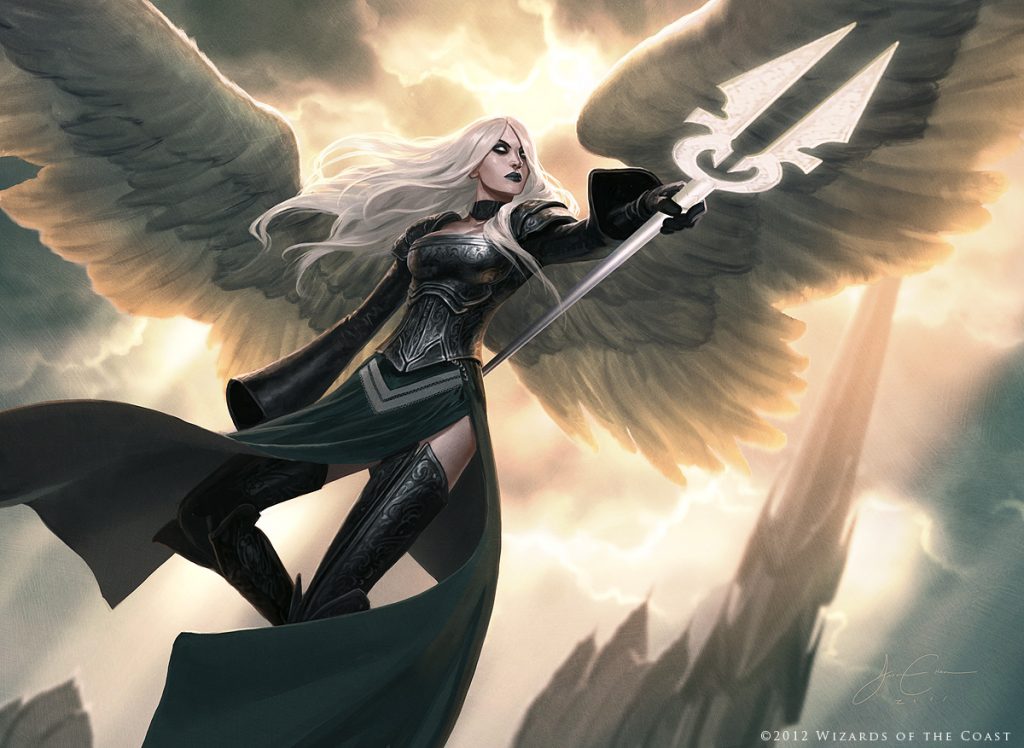
Avacyn, Angel of Hope | Illustration by Jason Chan
I do genuinely believe that Magic could be a lot more accessible to players if Wizards stopped printing new Magic cards. It’s very exciting to imagine a world where old sets that you either loved when they first came out, or are sad that you missed, become available again at the price of a Standard set. The idea of Eternal formats no longer being warped by sets like Modern Horizons is another reason players should want to see this happen.
Unfortunately, it doesn’t seem like the most likely direction the game is headed in. With Hasbro pressuring Wizards to increase their profits, it would be very unlikely to see them taking such a big risk that could negatively impact their bottom line, even if it would improve aspects of the game. Would you like to see Wizards stop or take a break from printing new cards? Would you be more excited to draft certain older sets than new ones? Let me know in the comments or on Draftsim’s Twitter.
Thank you for reading and I look forward to seeing you on the next article!
Follow Draftsim for awesome articles and set updates: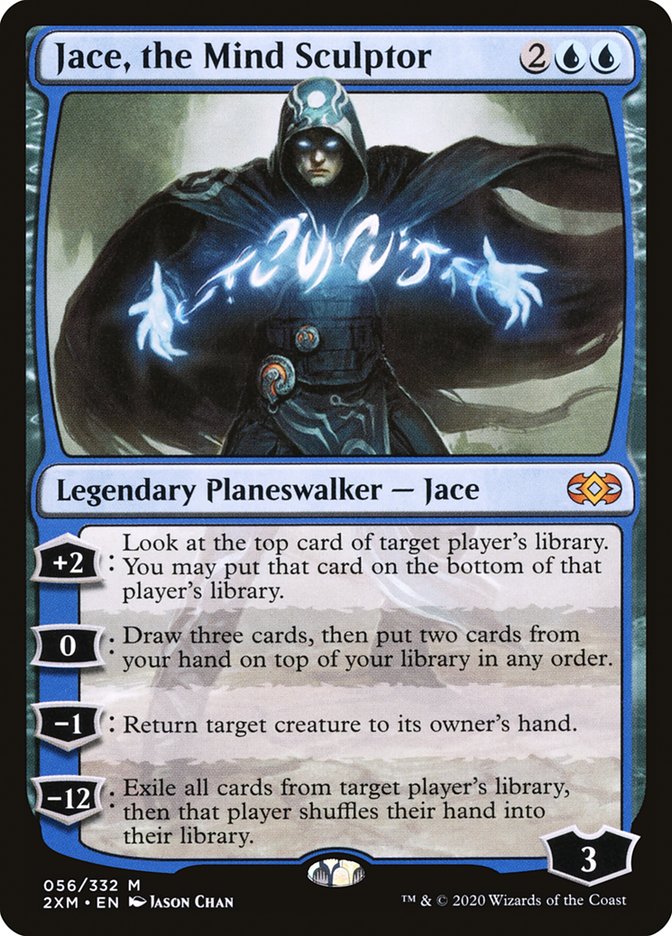
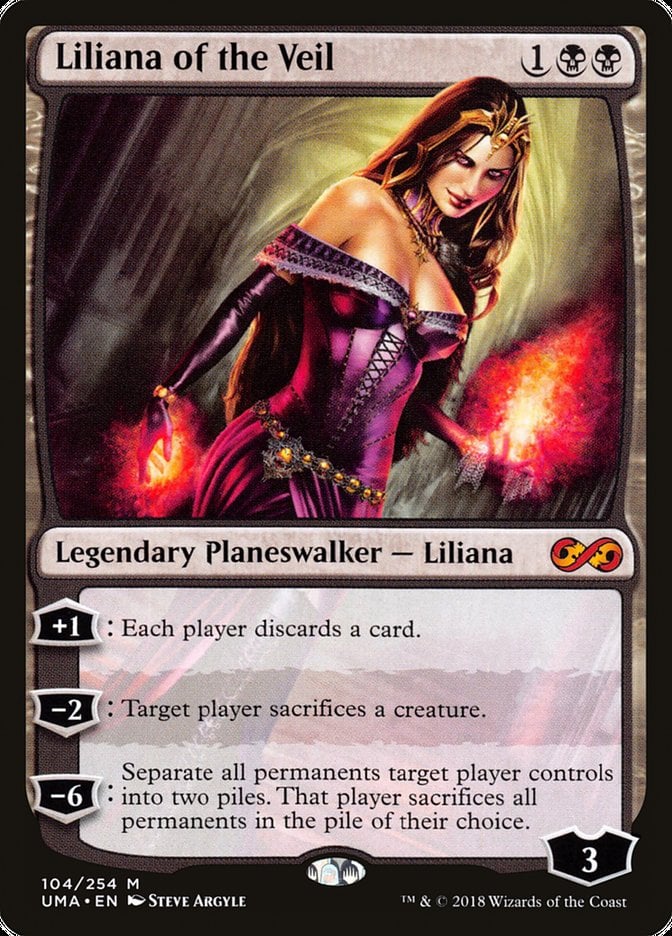
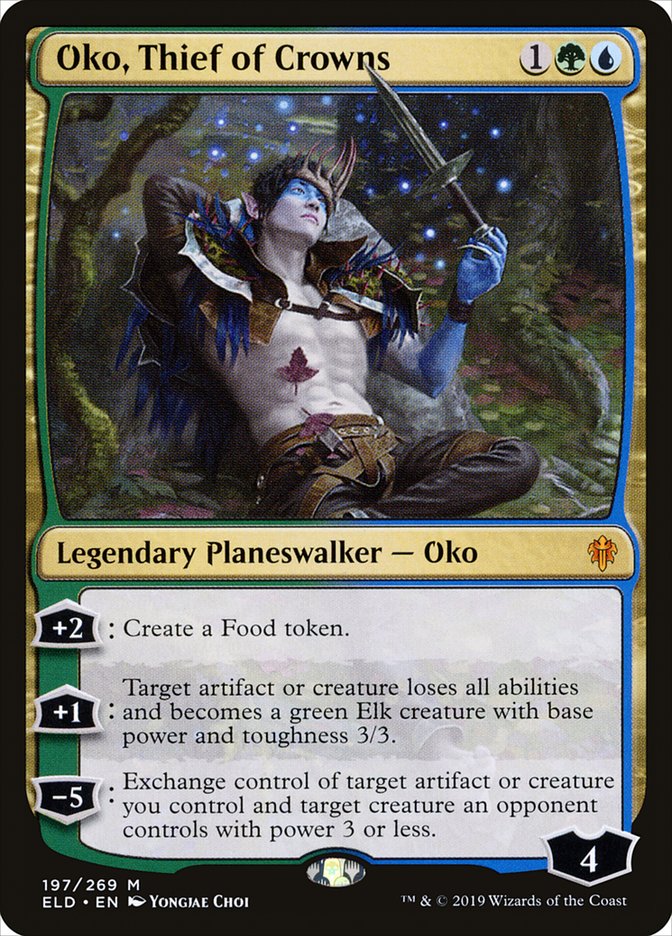

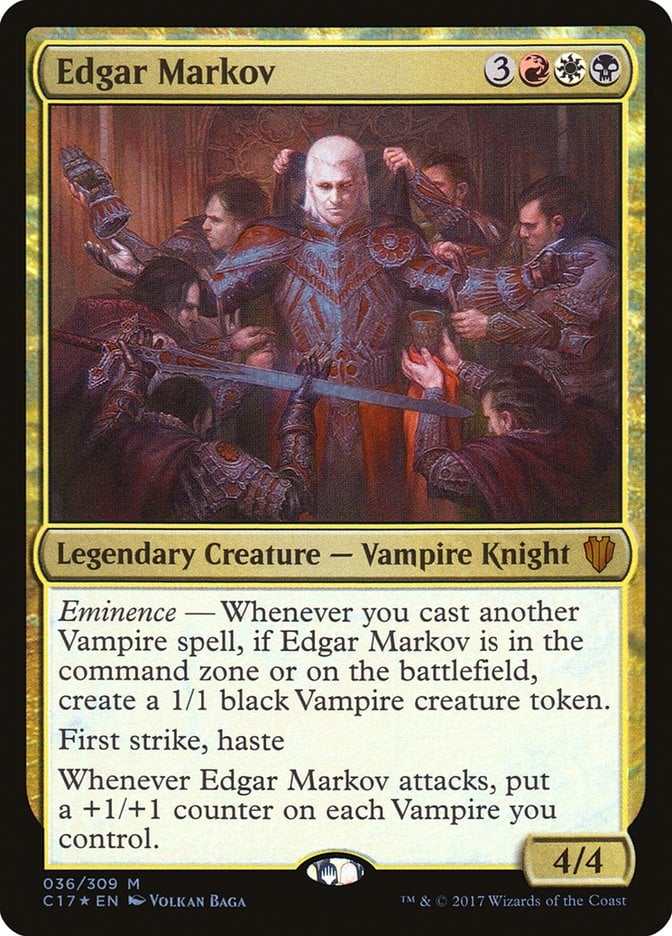
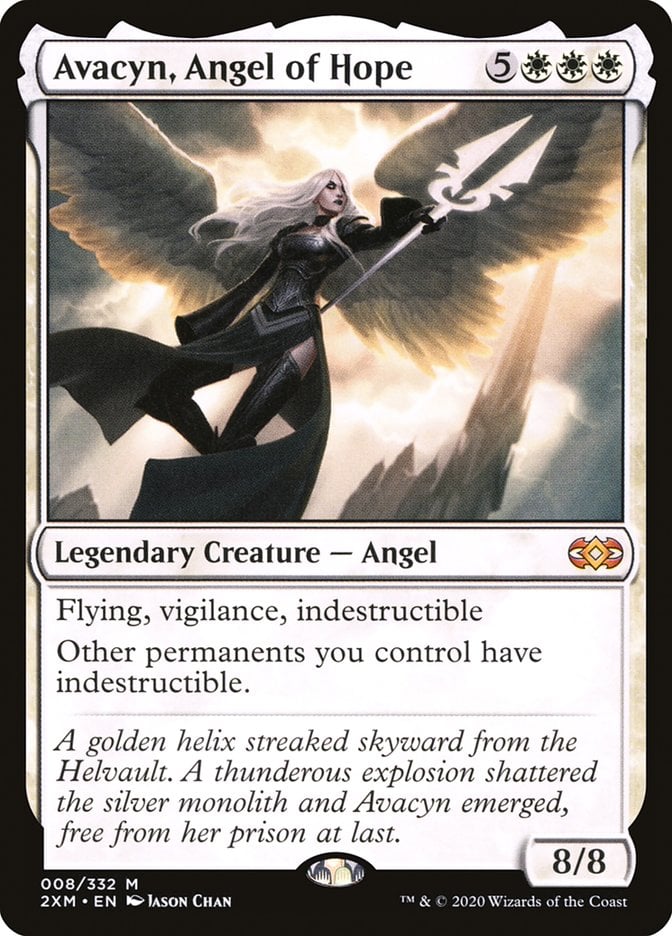
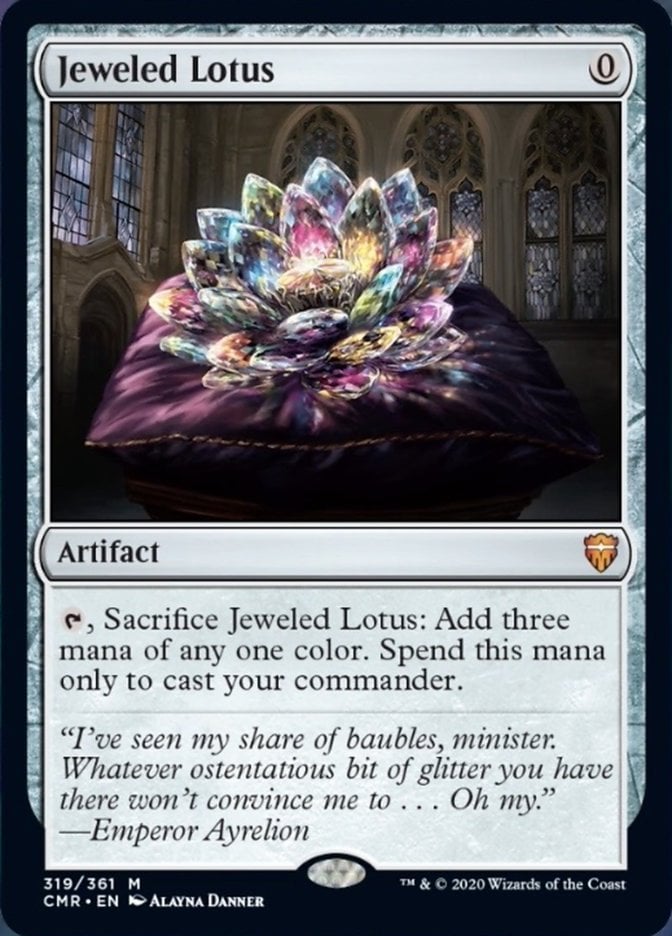



1 Comment
Personally i like having new cards to choose from, but if ever they stopped printing new cards i would enjoy that too!
Add Comment